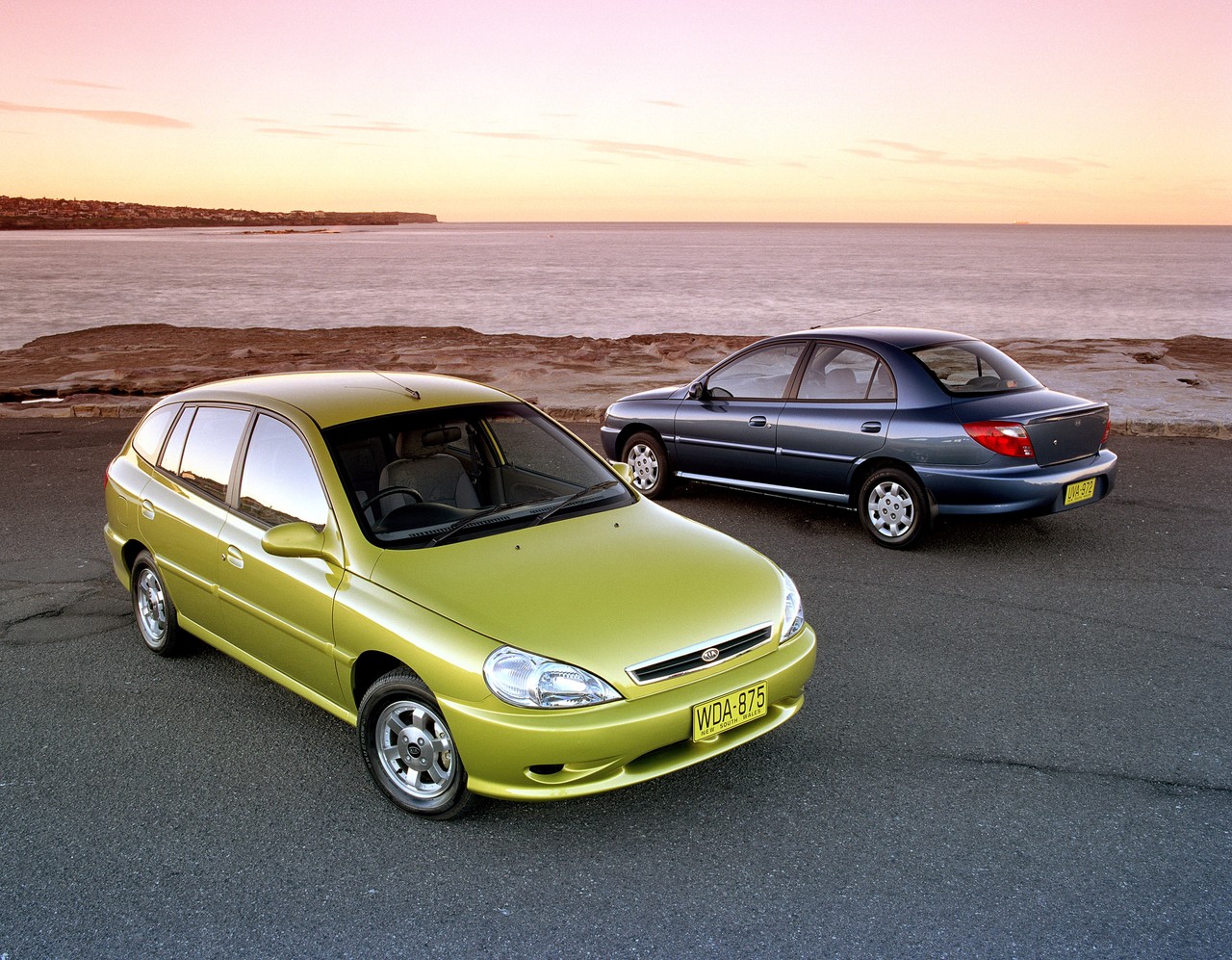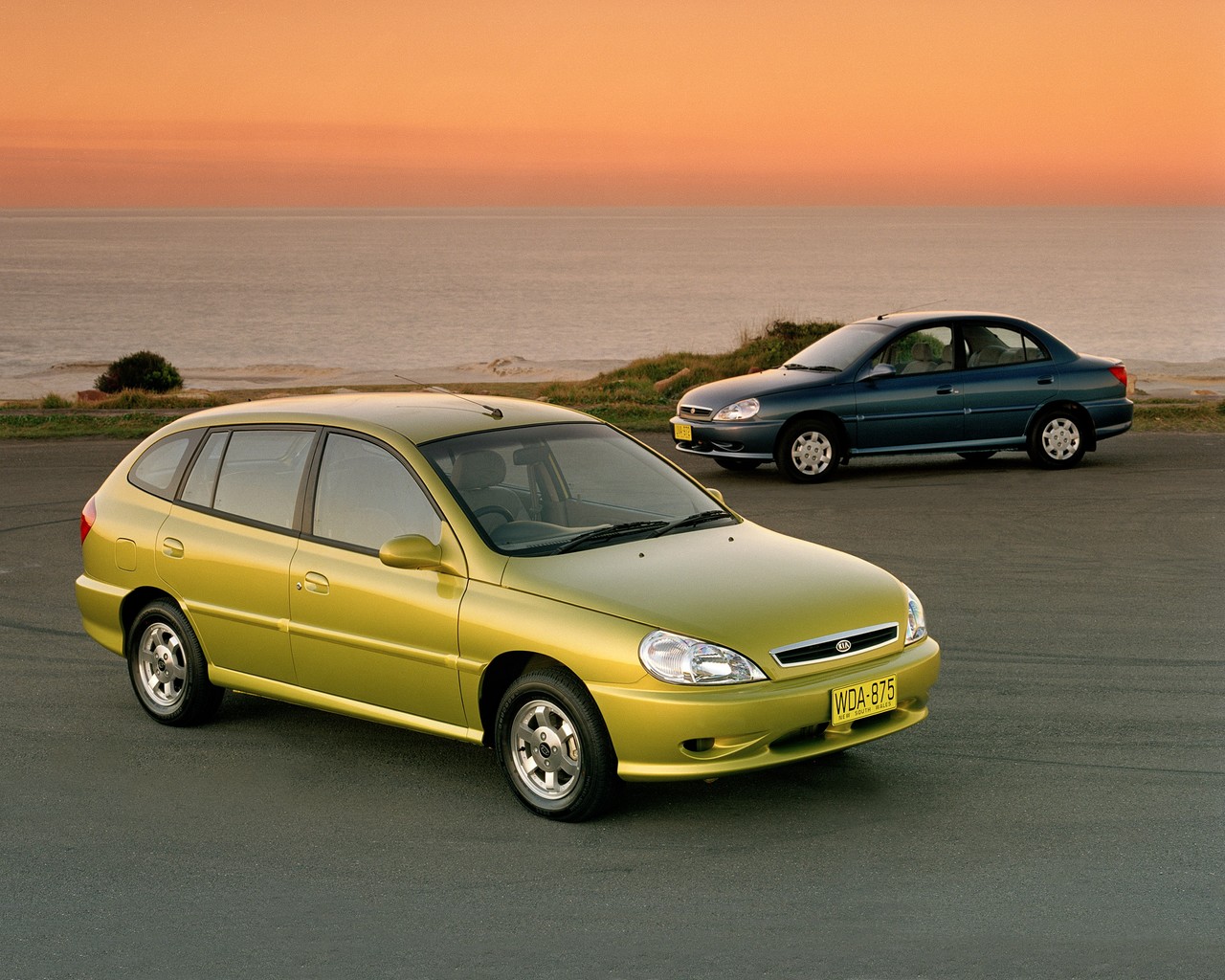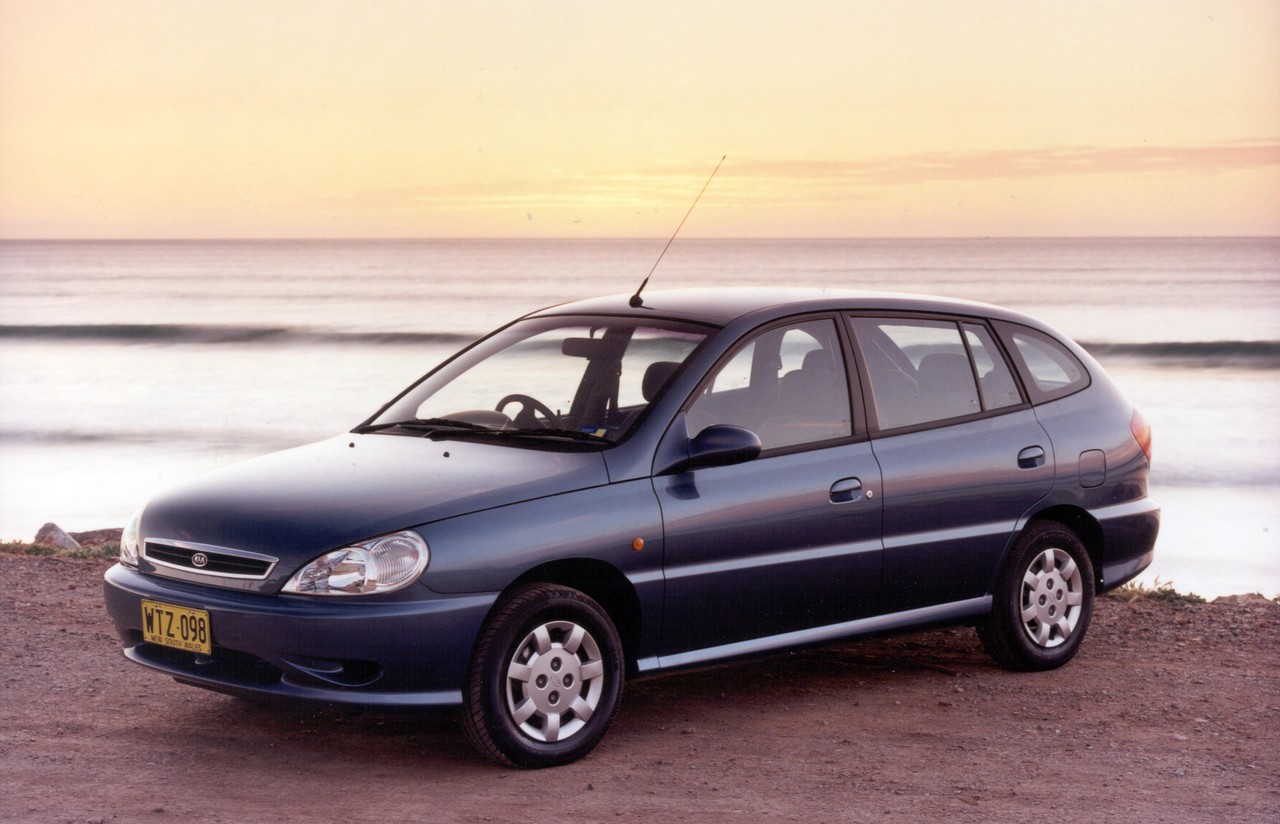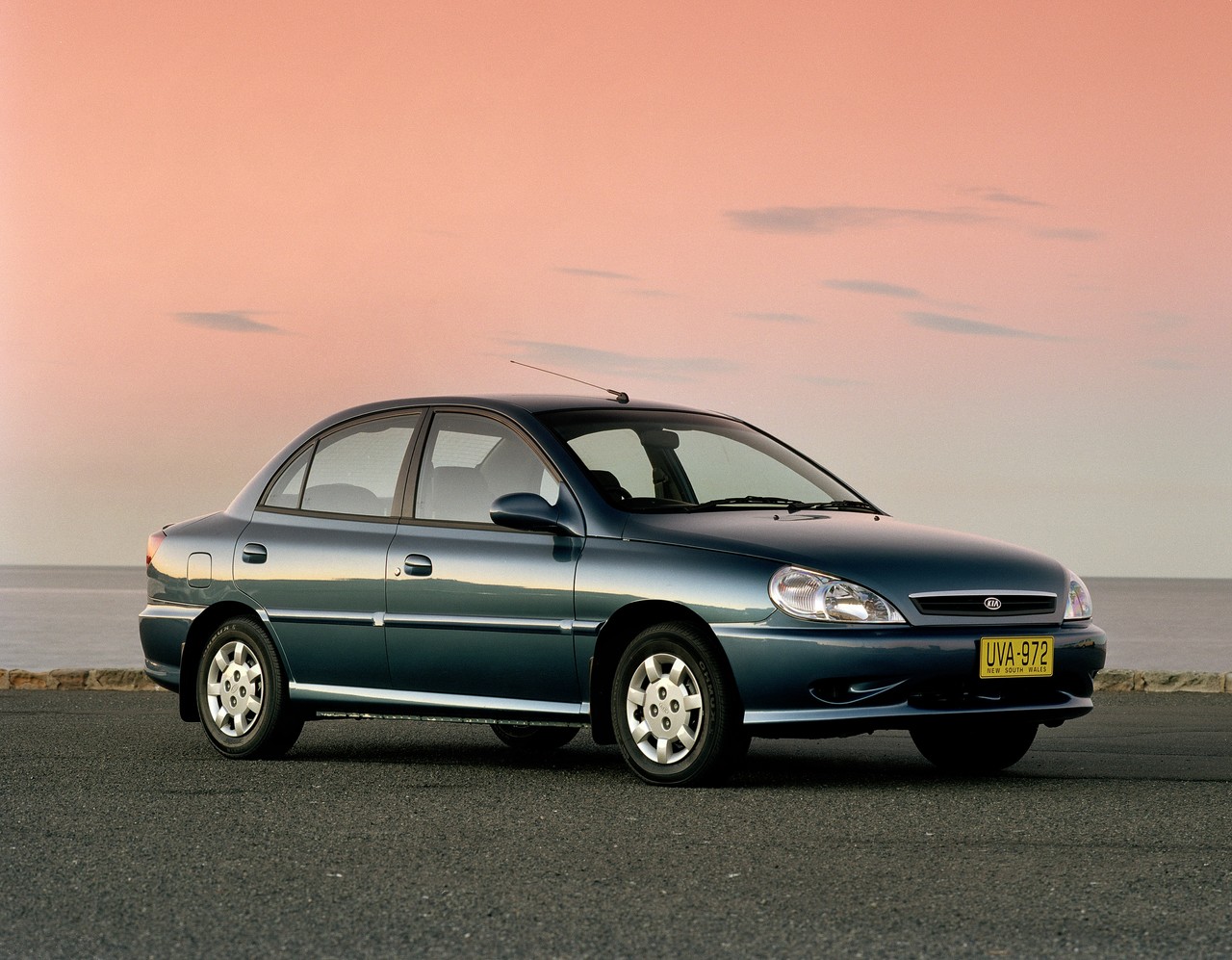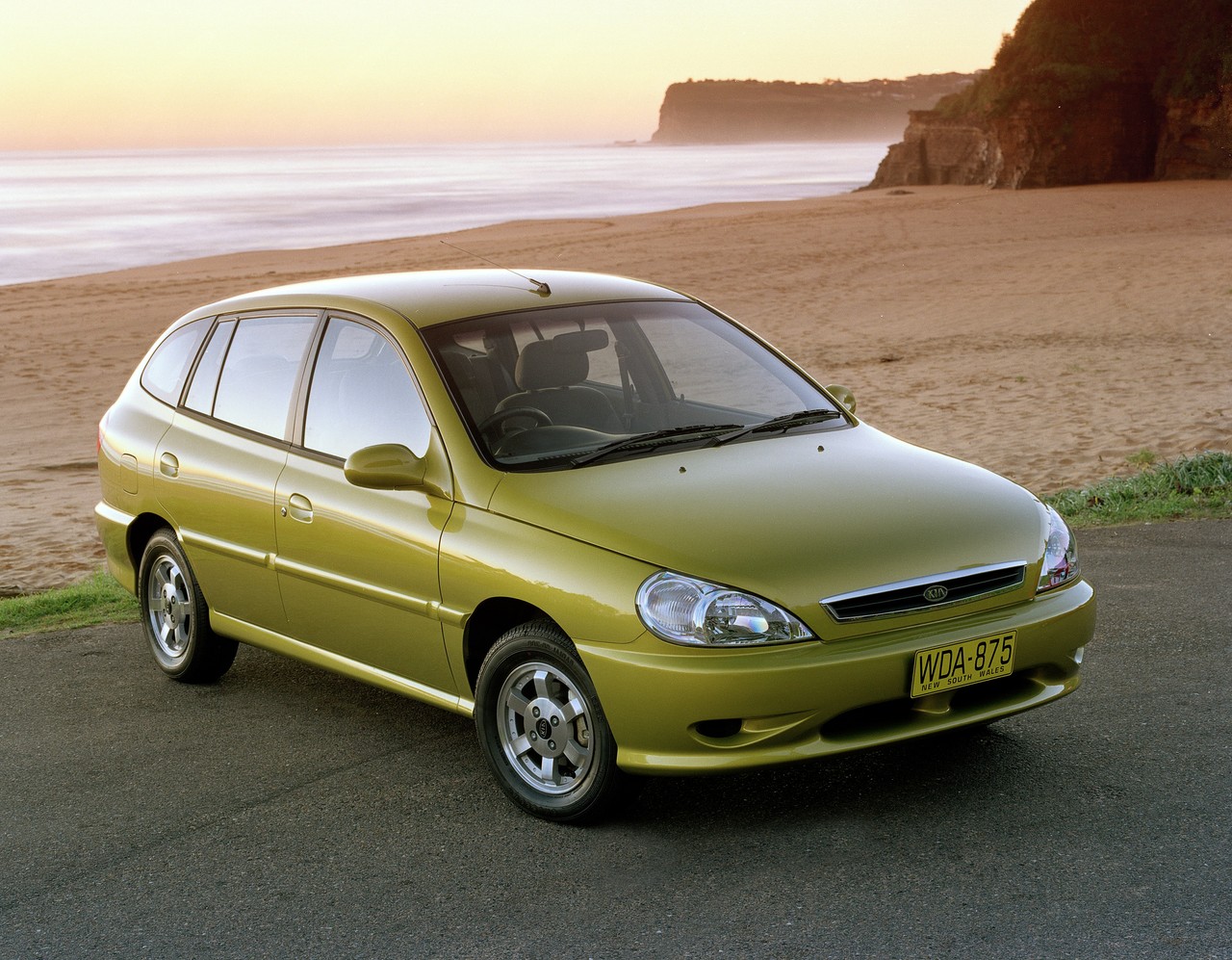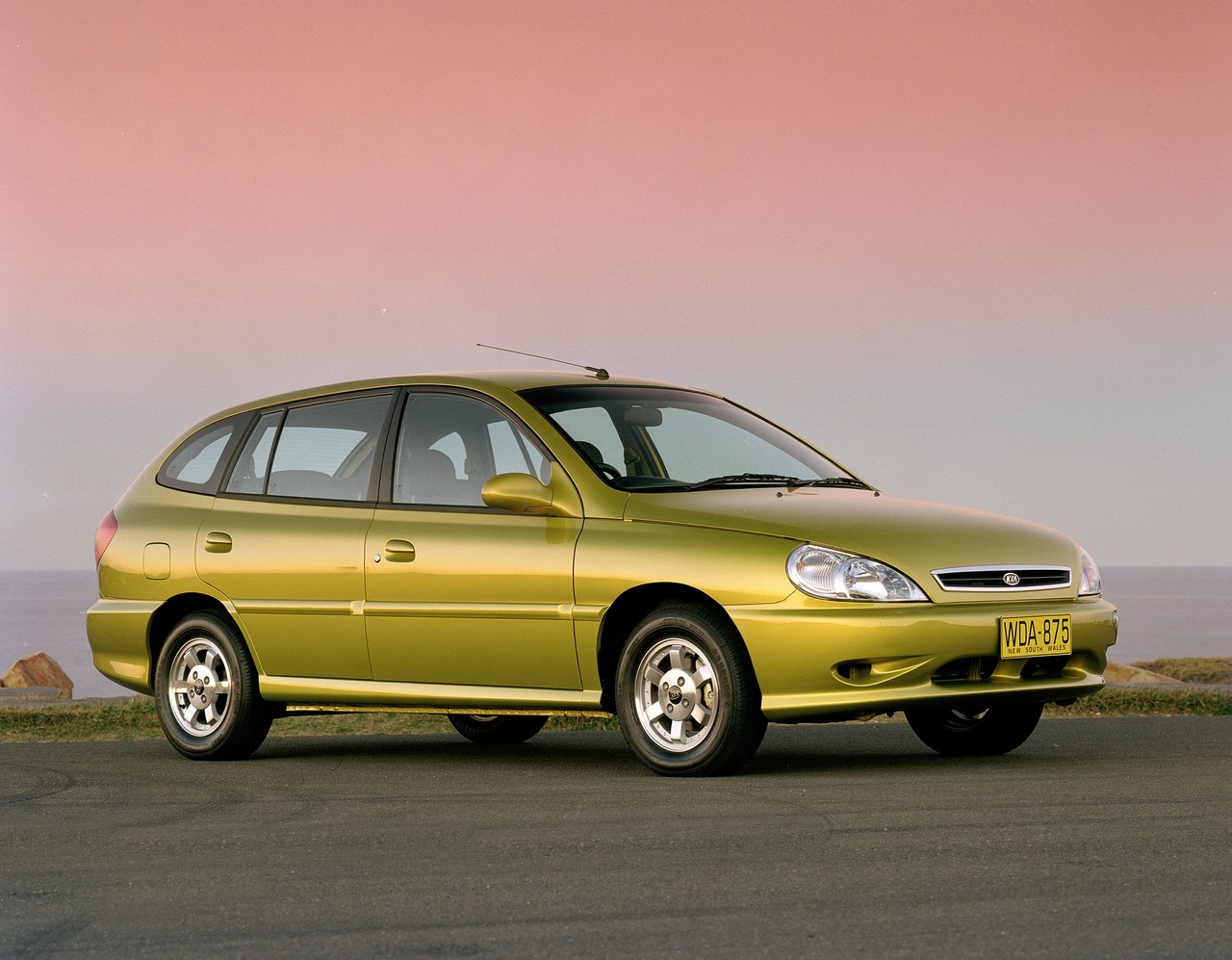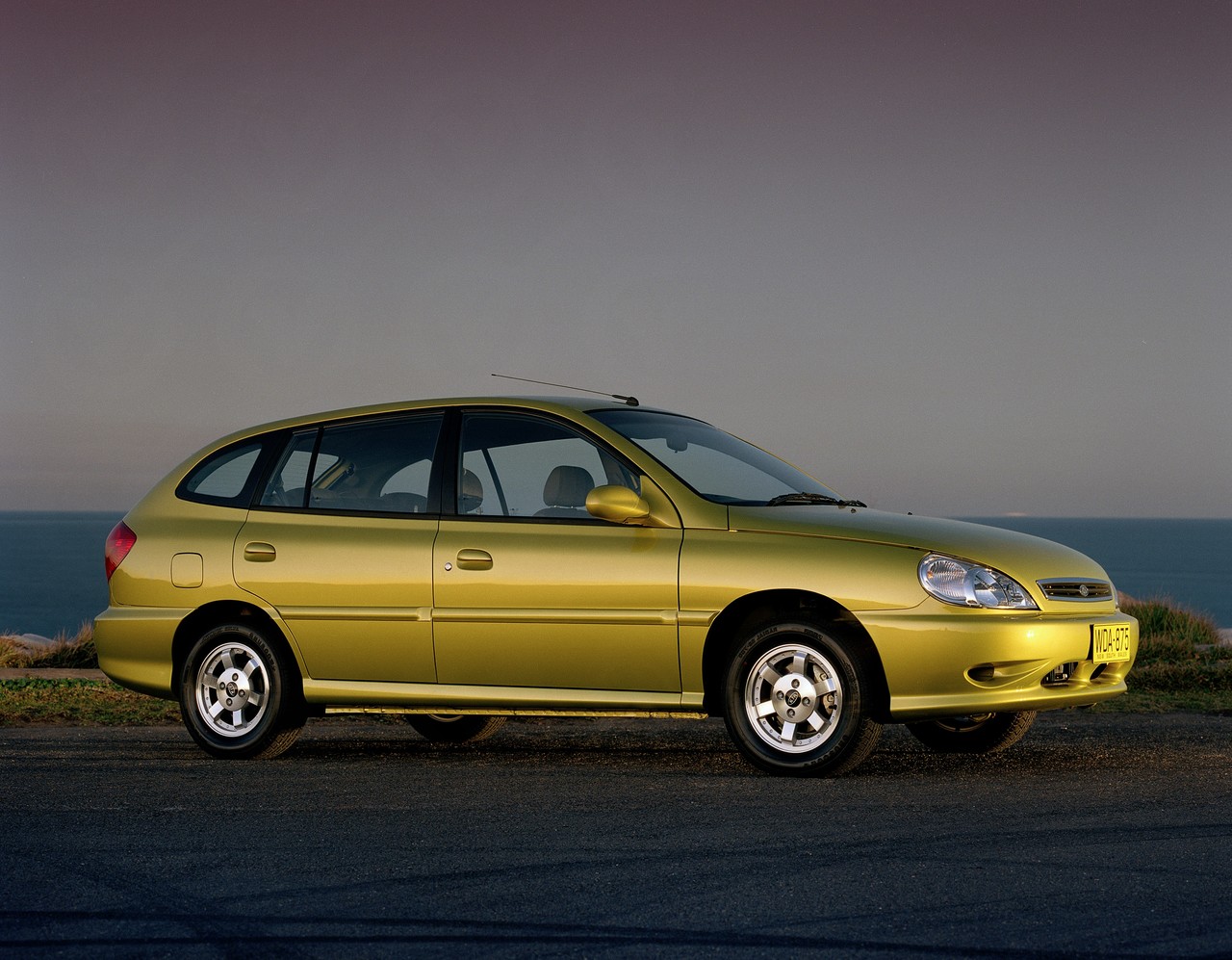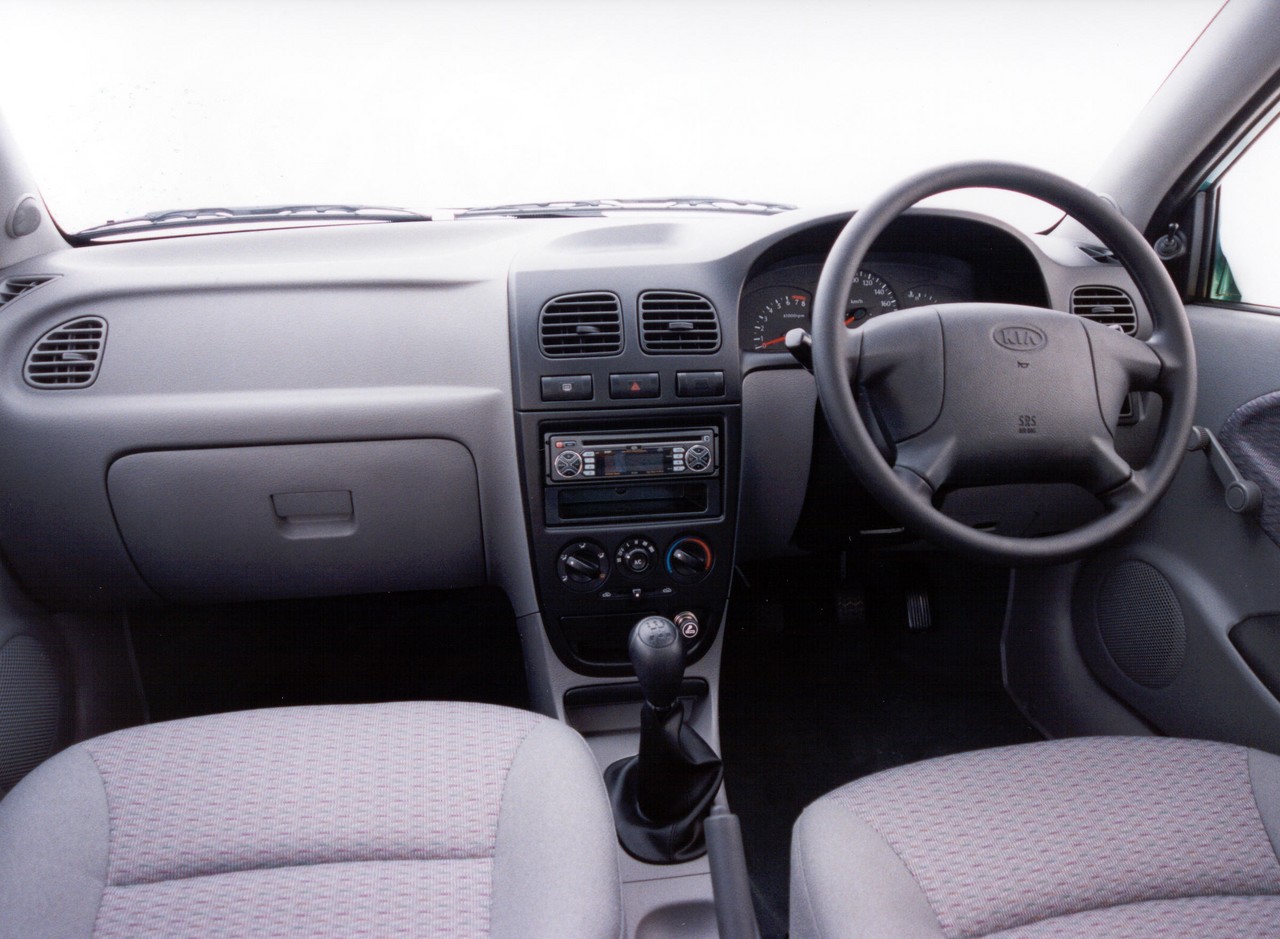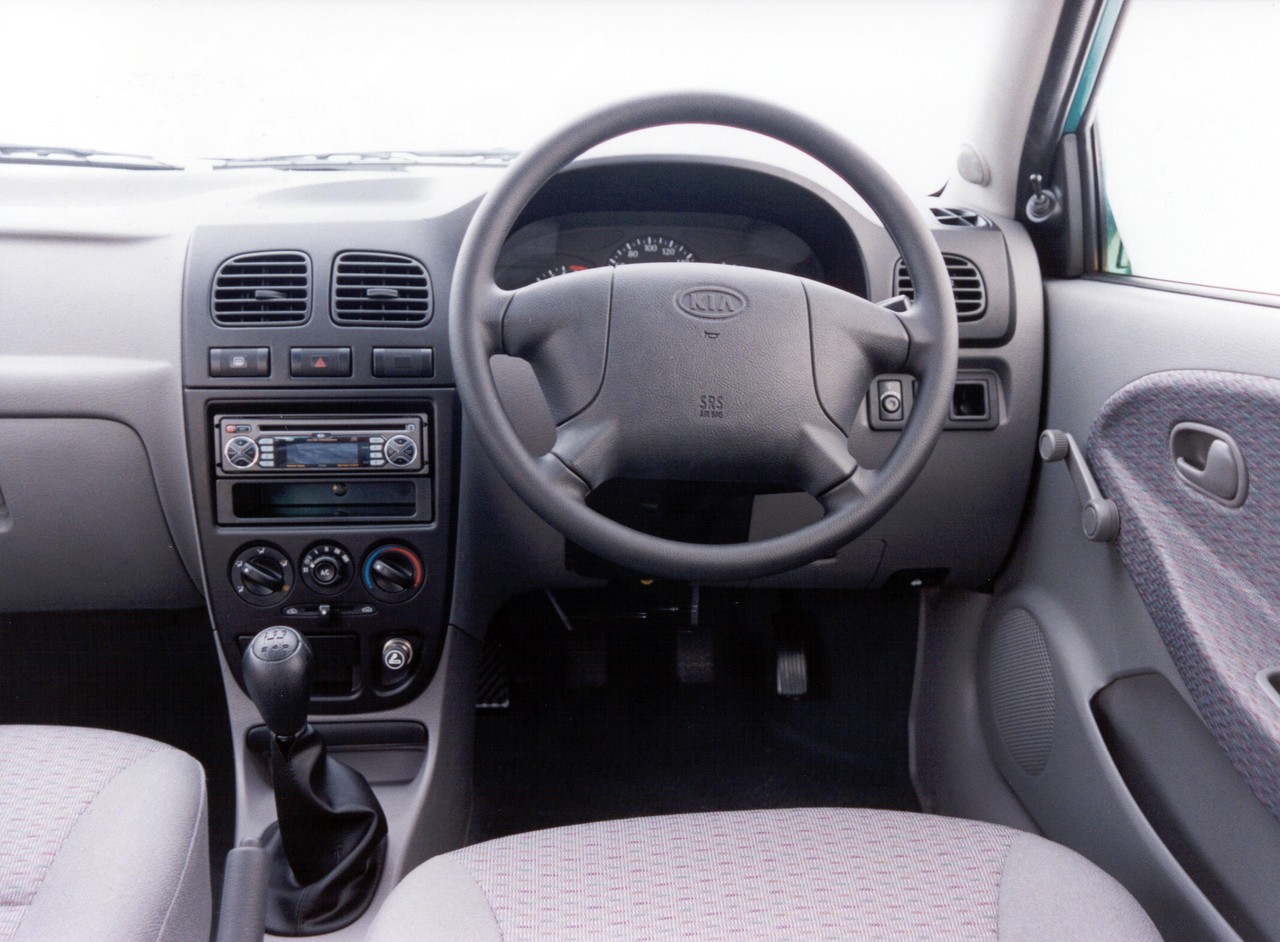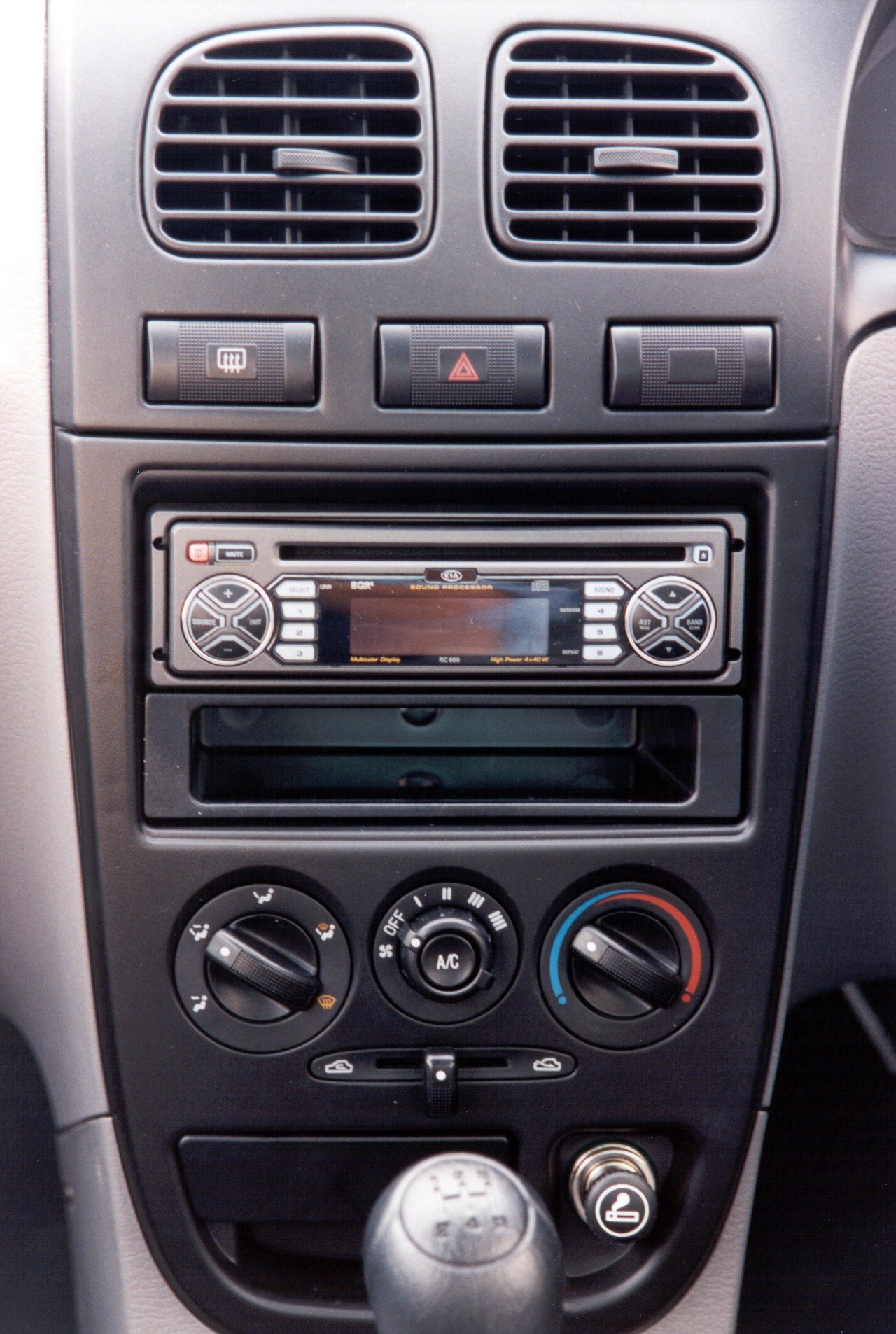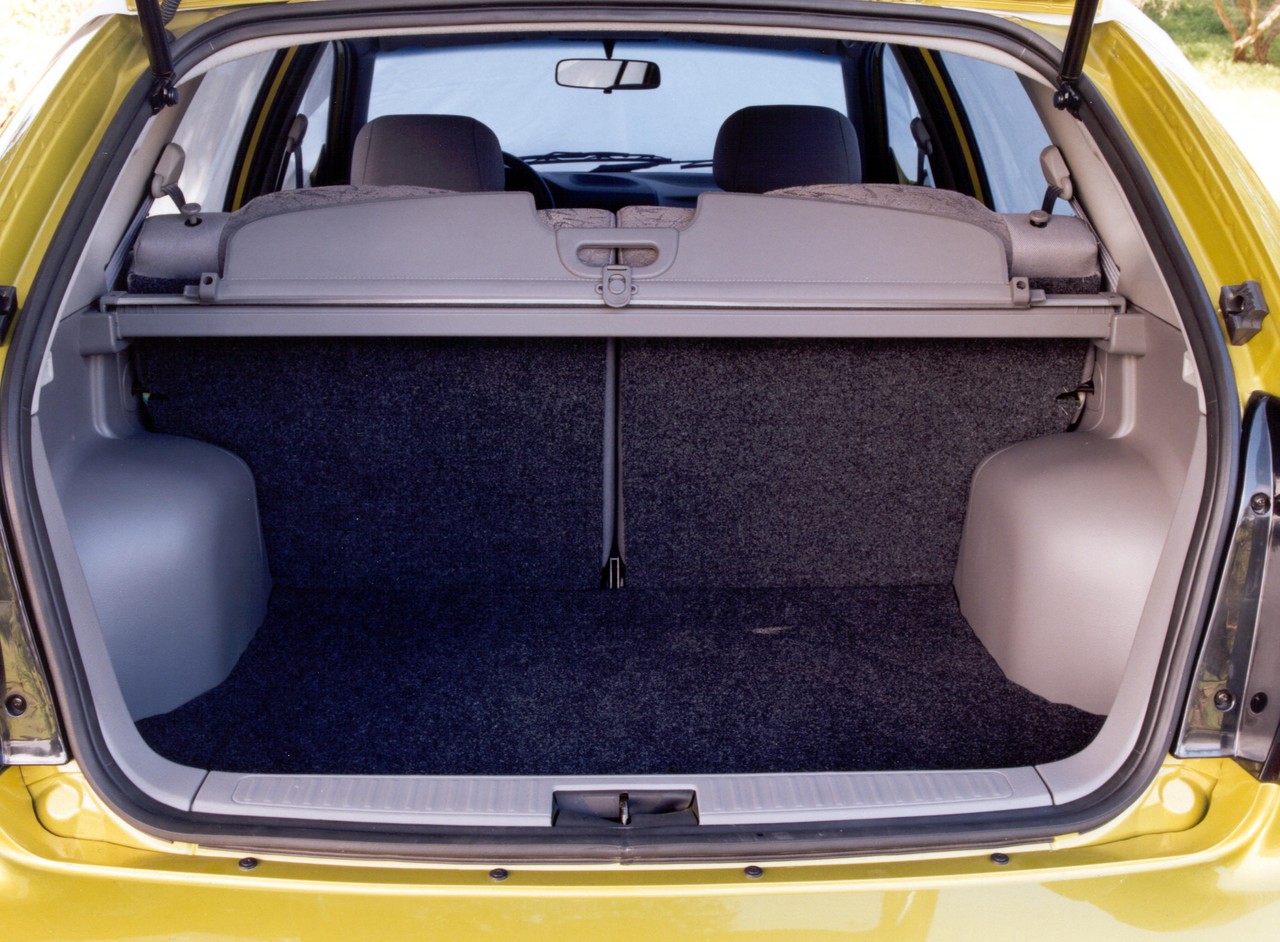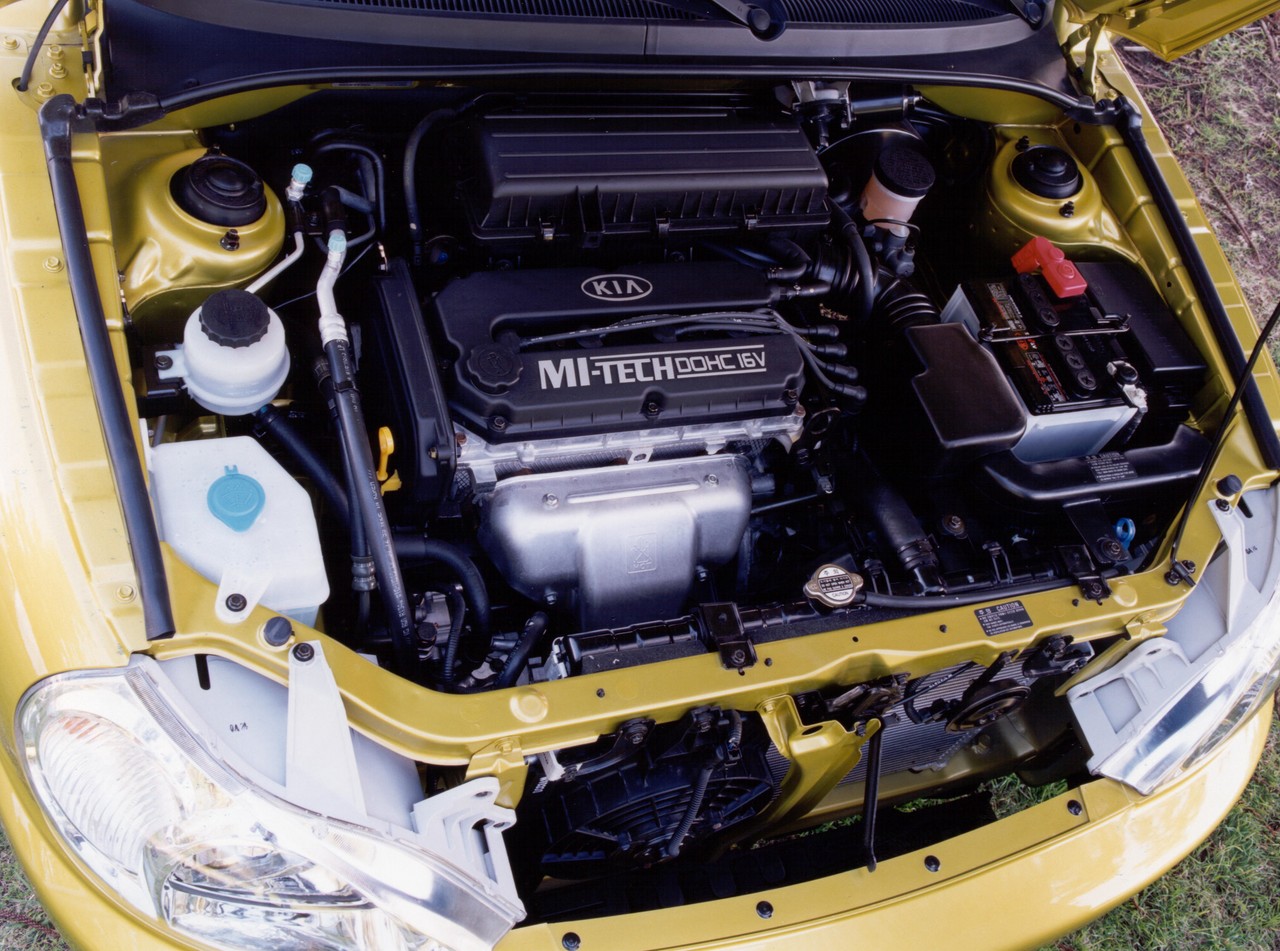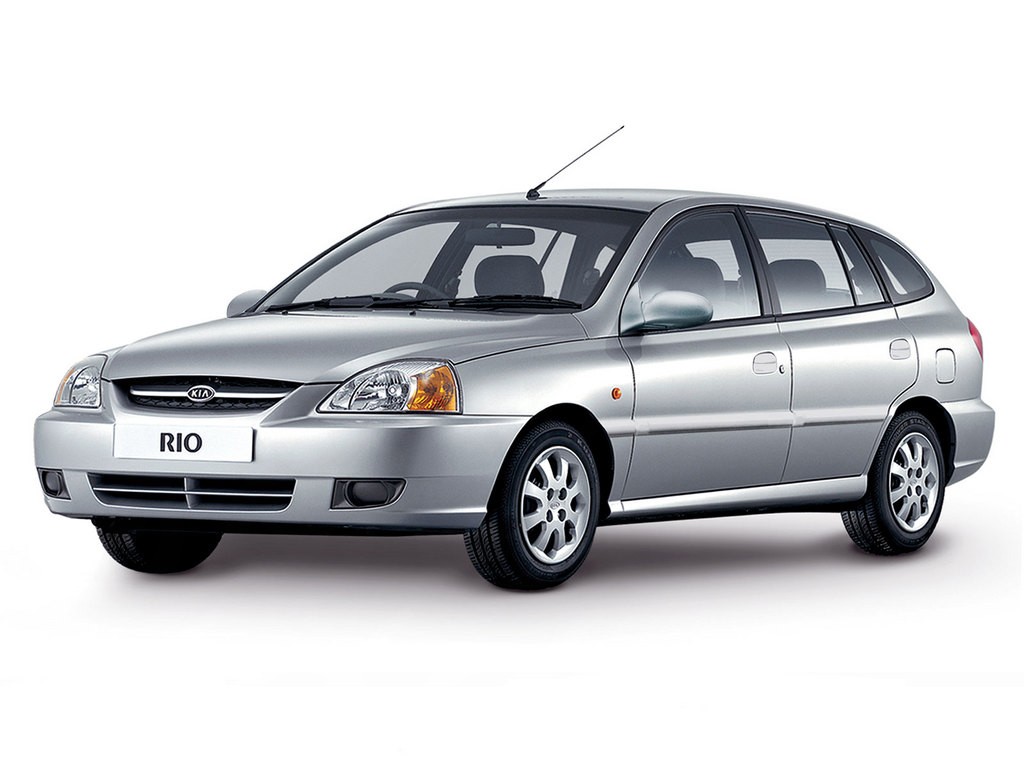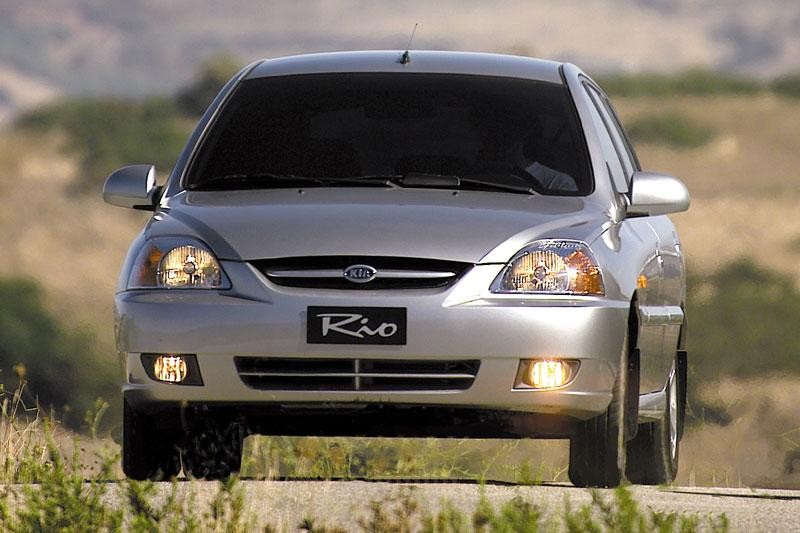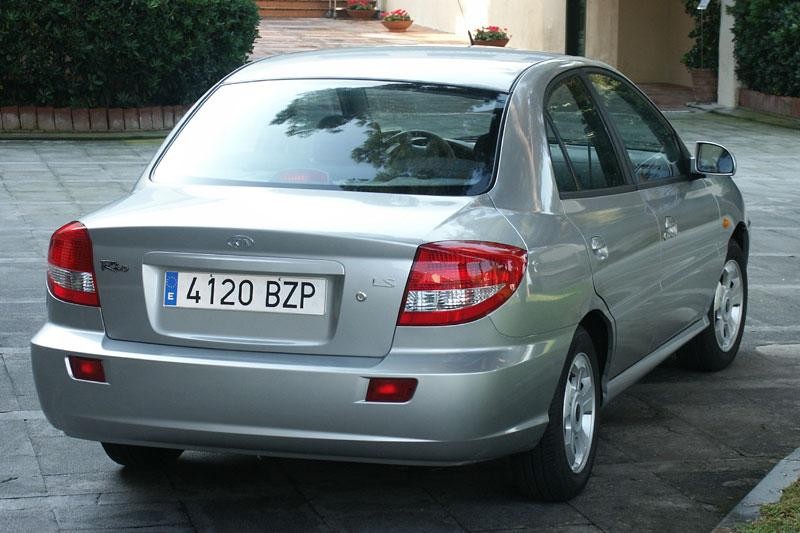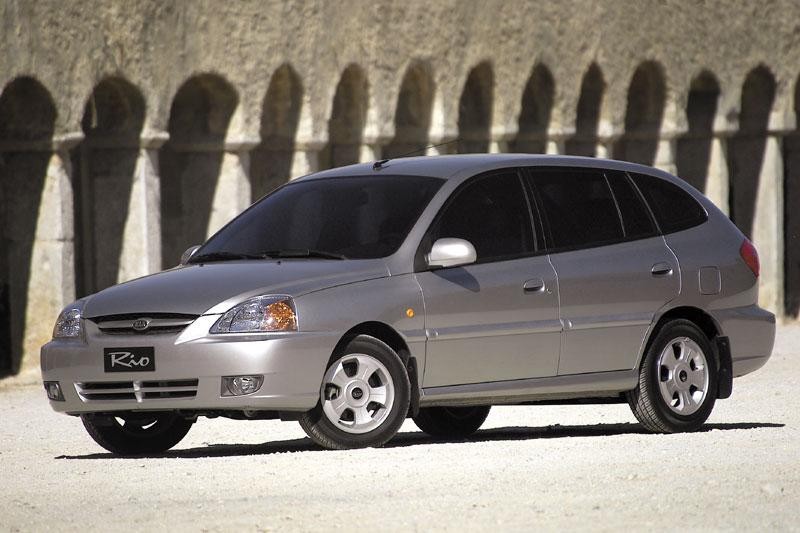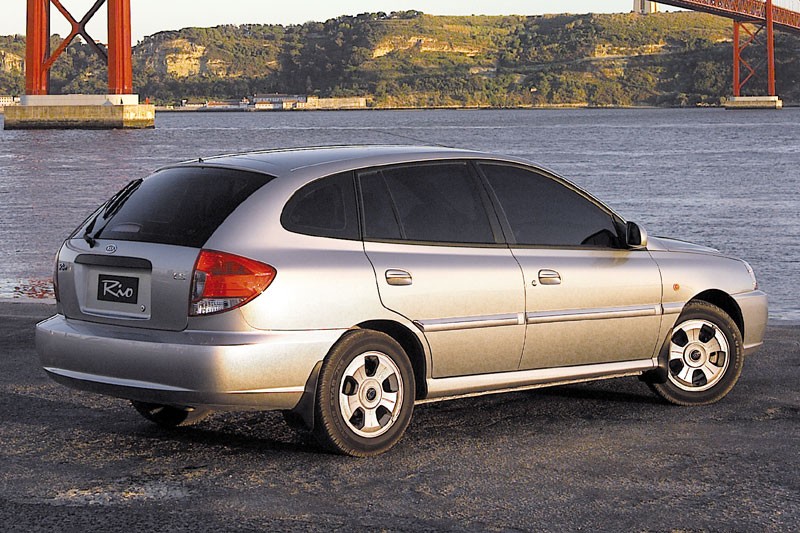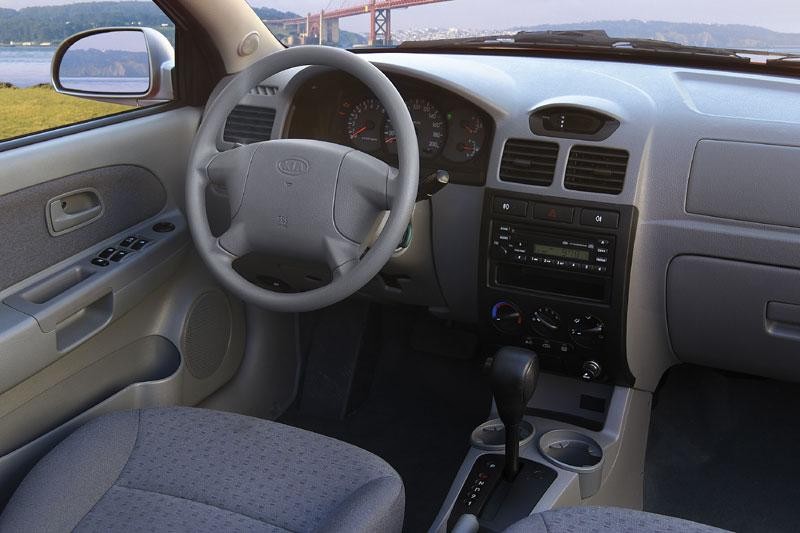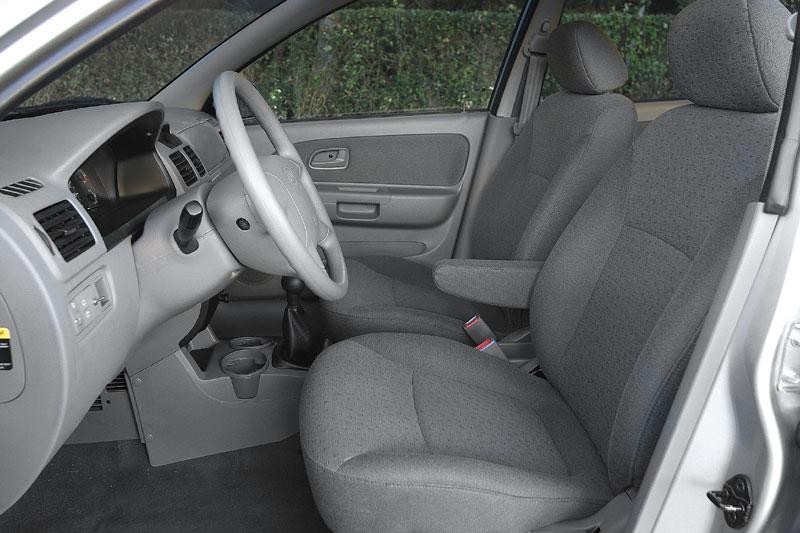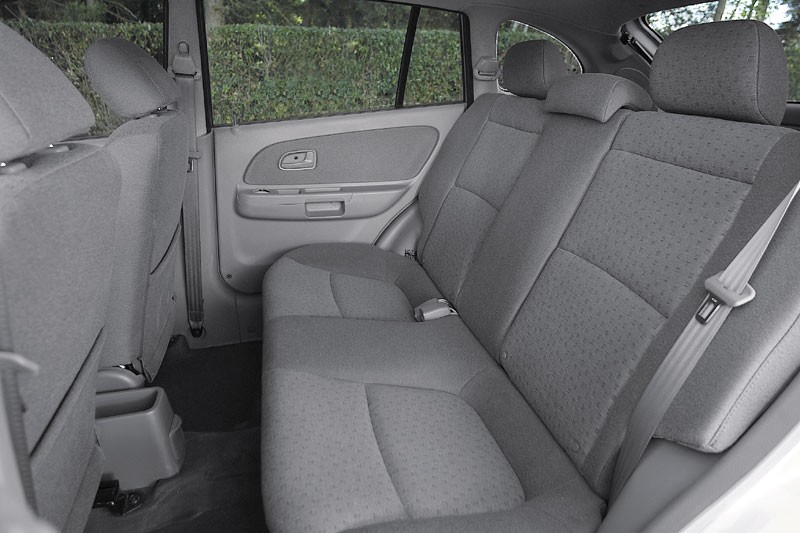
- Fuel-efficient 1.5-litre engine
- Progressive brake pedal feel
- Decent steering feedback
- Cabin lacks sound insulation
- Suspension bottoms-out on larger bumps
- Woeful dynamics
- Lap-only centre rear seat belt
- Indecisive automatic transmission
Review: Kia DC.I Rio (2000-02)
Overview
Released in July 2000, the Kia DC Series I (DC.I) Rio was available as a sedan or five-door hatchback. Manufactured in Gwangmyeong, South Korea, the front-wheel drive Rio was powered by a 1.5-litre four-cylinder petrol engine that was mated to either a four-speed automatic or five-speed manual transmission.
B5-DE engine
The Mazda-sourced 1.5-litre B5-DE petrol engine had a cast iron block, double overhead camshafts, four valves per cylinder and a compression ratio of 9.5:1.
Dimensions
Compared to its Pride predecessor – sold in Australia as the Ford Festiva – the DC Rio hatchback was 220 mm longer (at 4215 mm), 5 mm wider (1675 mm), 60 mm taller (1510 mm) and had a 20 mm longer wheelbase (2410 mm); relative to the hatchback, the DC Rio sedan was 70 mm lower (at 1440 mm), but the other dimensions were the same.
Suspension
The DC Rio had fitted with MacPherson strut front suspension and a torsion beam rear axle.
| Body | Engine | Trans. | Peak power | Peak torque |
|---|---|---|---|---|
| 4dr sedan, 5dr hatch |
1.5-litre petrol I4 | 4sp auto, 5sp man. |
73.5 kW at 5800 rpm | 135 Nm at 4500 rpm |
Safety equipment
Standard safety equipment for the DC.I Rio consisted of a driver’s airbag.
ANCAP crash testing
In ANCAP crash testing , a 2001 DC.I Rio hatchback received a three star adult occupant protection rating with a score of 19.06. In the offset crash test, protection from serious leg injury was poor for the driver and, on rebound, the driver’s head hit the centre pillar. In the side impact, there was a high risk of life-threatening chest injury for the driver.
Features
Standard Rio features included a six speaker sound system with CD player, air conditioning, central locking and a tilt-adjustable steering wheel.
Review: Kia DC.II Rio (2003-05)
Overview
Released in January 2003, the DC Series II (DC.II) Rio introduced mechanical upgrades, additional features and a subtle facelift. Visually, the DC.II Rio could be identified by its revised front and rear styling which included a high-mounted LED brake light.
Significantly, the DC.II Rio was fitted with additional sound proofing material, longer travel suspension, more powerful headlights and larger front brake discs. Inside, there was a new dashboard, seats, twin gloveboxes ahead of the front passenger, larger door bins, twin cupholders in the center console and upgraded speakers including tweeters at the base of the A-pillars.
| Body | Engine | Trans. | Peak power | Peak torque |
|---|---|---|---|---|
| 4dr sedan, 5dr hatch |
1.5-litre petrol I4 | 4sp auto, 5sp man. |
71 kW at 5500 rpm | 132 Nm at 4500 rpm |
Safety equipment
Safety equipment was initially unchanged for the DC.II Rio, though the stiffer body shell was claimed to offer greater occupant protection. From September 2003, front seatbelt pretensioners were fitted as standard.
ANCAP crash testing
In ANCAP crash testing , a 2004 DC.II Rio hatchback received a two star adult occupant protection rating with a score of 16.05. In the offset crash test, the passenger compartment started to lose structural integrity; protection from serious leg injury was poor for the driver and chest protection was marginal. In the side impact test, protection from serious chest injury for the driver was close to poor.
Features
Standard features for the DC.II Rio were enhanced to include a rear 12 volt power outlet, improved central locking system (which could operate both front doors) and immobiliser; hatchback models also featured a 60/40 split and folding rear seat. From September 2003, the DC.II Rio was also fitted with power mirrors and power windows.
Related links
